 By Jophin July 14, 2025
min read
By Jophin July 14, 2025
min readA Guide to Generative AI in Healthcare
Clinicians are overwhelmed by administrative work, spending hours each day on documentation, billing, and compliance, which detracts from patient care and contributes to burnout.
This friction isn’t just draining – it’s costing healthcare organizations millions annually in lost productivity, delayed diagnoses, and staff turnover. Traditional systems aren’t built for modern expectations.
Enter Generative AI in Healthcare. This next-gen technology creates clinical notes, diagnostic insights, custom care plans, and even drug simulations, alleviating administrative burdens and improving both clinical accuracy and patient experience. In this blog, we’ll walk through proven use cases, explore compliance and risk considerations, and guide you step-by-step – via a seven-step roadmap – to leverage Generative AI effectively. Ready to explore how partnering with a specialized Healthcare App Development Company or leveraging our Healthcare Technology Solutions can fast‑track your success?
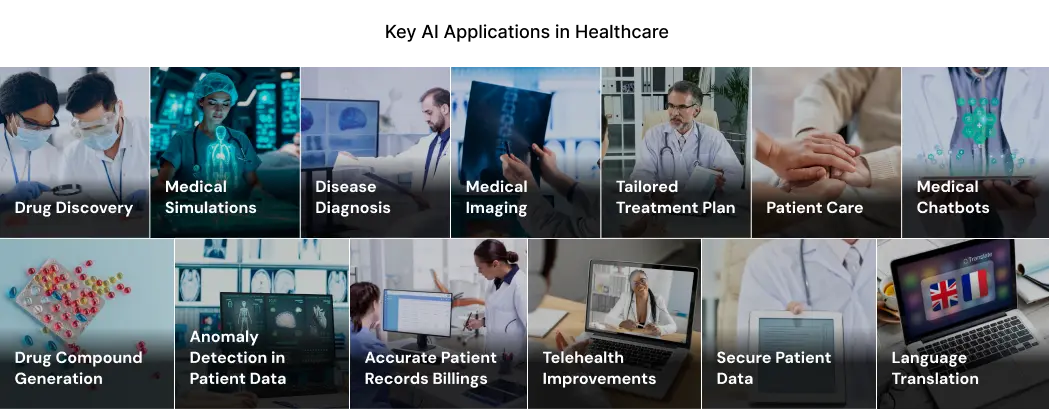
What Is Generative AI in Healthcare?
Generative AI in healthcare refers to advanced models that create new content, such as clinical documentation, diagnostic interpretations, patient education, or drug molecular designs, based on existing data. These systems employ techniques such as LLMs, GANs, and ASR to generate structured, actionable outputs that support both clinical and operational workflows.
1. Defining Generative AI and Its Role in Healthcare
Generative AI models (e.g., GPT‑style LLMs or GANs) learn patterns from vast medical datasets to produce coherent, physician-ready materials. For example, NLP combined with automatic speech recognition (ASR) can draft SOAP and BIRP notes directly from conversations, transforming EHR documentation and reducing administrative burden.
2. How Generative AI Differs from Traditional AI in Medical Contexts
Traditional AI in healthcare is primarily predictive, identifying risks or flagging anomalies (e.g., sepsis likelihood). Generative AI, however, constructs new outputs such as detailed notes, patient summaries, or synthetic medical images. It is a creative force in workflows – though this power comes with risks such as hallucination and bias, which require AI Guardrails.
Generative AI Use Cases in Healthcare
Generative AI is reshaping healthcare operations by embedding creativity and automation into clinical and administrative workflows. Below are the five most impactful use cases transforming care today:
1. Generative AI for Clinical Documentation & Notes
Generative AI scribes automatically transform doctor-patient conversations into structured clinical notes, reducing documentation time by up to 80 %. In the UK’s largest clinical rollout of ambient AI, four in five general practitioners (GPs) using the tool reported that it saved them time, with a similar number stating that it enabled them to build a better rapport with their patients. Implementing this capability within your system not only enhances your clinical efficiency but also strengthens patients’ relationships.
2. Generative AI in Diagnostics and Imaging
Advanced AI models enhance imaging diagnostics by improving scan quality and detecting anomalies early. A large-scale randomized trial (the MASAI study) involving over 105,000 women across Sweden’s national screening program found that AI-assisted mammography reduced the radiologist’s screen-reading workload by 44%. Furthermore, studies that deploy AI alongside radiologists for breast cancer screening have reported detection accuracies of up to 94%, notably in trials analyzing digital breast tomosynthesis and AI-enhanced image analysis. This empowers radiology teams to prioritize patient cases effectively and confidently.
3. Generative AI Use Cases in Drug Discovery & Personalized Medicine
In pharmaceutical R&D, generative AI accelerates innovation by creating synthetic molecules, simulating clinical outcomes, and tailoring treatments to individual patients. It helps identify biomarkers and predict disease progression—for example, AI has reduced R&D cycles and supported personalized interventions using patient data and genomics.
4. Generative AI for Patient Engagement & Triage
Conversational AI tools guide patients through symptom assessment, appointment scheduling, and follow-up care, providing a seamless experience. These virtual triage systems reduce staff burden, broaden access, and deliver fast, reliable patient support—especially in multilingual and remote care settings, where they excel in handling low-stakes tasks. They offer a dependable and scalable entry point for Generative AI in healthcare. For a deeper dive into how AI is transforming virtual care and telemedicine delivery, check out How Is AI Transforming Telemedicine?
5. Generative AI in Administrative Automation
Generative AI automates back-office workflows, including prior authorizations, claims verification, and billing. AI agents have reduced wait times for specialty medication approvals from approximately 30 days to nearly 3 days, thereby reducing insurance denials and freeing teams to focus on high-value initiatives. Integrating these solutions is a key use case for Healthcare Technology Services, with built-in connections to EHR and billing systems.
Benefits of Generative AI in Healthcare
Generative AI delivers a transformative organizational impact backed by real results from healthcare settings.
1. Improved Operational Efficiency and Cost Reduction
Generative AI scribes have reduced documentation time by up to 80% in primary care workflows. At Vanderbilt University Medical Center, voice assistants enabled clinicians to offload mundane administrative tasks, saving up to 30% of their time and reducing burnout while improving their focus on patient care.
2. Enhanced Patient Outcomes and Access to Care
In Sweden’s MASA AI mammography trial, using AI as a first reader reduced the radiologist’s workload by 44% while maintaining a 94% detection accuracy rate, enabling earlier intervention and improved patient outcomes. Similarly, AI-powered virtual assistants at Mass General Brigham handled 40,000+ patient calls in the first week, reducing wait times and expanding access.
3. Accelerated Innovation in Drug Development and Diagnostics
Pharma’s use of generative AI, such as molecular simulations, has accelerated drug pipelines by up to 70%, enabling companies like Insilico Medicine to transition from discovery to trials in just 18 months rather than years. Collaboration between Moderna and OpenAI on generative tools also aims to deliver 15 new products within five years, demonstrating enterprise-scale innovation.
Challenges in Generative AI in Healthcare
While generative AI offers enormous potential, healthcare leaders must recognize and proactively manage these critical challenges to ensure safe and sustainable adoption.

1. Accuracy, Hallucinations & Bias Risks
Generative AI models can produce plausible but fabricated clinical content—this is known as a “hallucination.” For example, an AP investigation into hospitals using OpenAI’s Whisper transcription tool revealed it added invented content in 80% of transcripts, including fabricated clinical details and comments. This led to calls for tighter oversight, especially since over 30,000 clinicians currently use Whisper-based tools. It’s a stark reminder: human review and robust validation processes are non-negotiable.
2. Data Privacy, Security & Compliance
Healthcare AI must comply with HIPAA, GDPR, and evolving laws (e.g., updated HIPAA Security Rule expected in 2025) while protecting PHI. It requires encryption, access control, audit logging, and breach response planning—especially given the 264% rise in ransomware events last year.
3. Integration & Infrastructure Readiness
Most healthcare systems struggle with fragmented data, legacy EHRs, and unstructured contracts – creating integration hurdles and hidden biases. AI projects often stall unless IT architecture, data tagging, and staff training are prioritized.
4. AI Guardrails & Ethical Safeguards
Effective deployment requires layered guardrails, including clean data processes, in-model alignment through human feedback, and post-deployment monitoring, such as red-teaming and bias filters. These safeguards are crucial to ensure the safe, equitable, and ethical use of clinical settings.
Generative AI adoption in healthcare follows a clear seven-step roadmap

This roadmap guides healthcare leaders through the strategic adoption process, assessing readiness, prioritizing high-value use cases, engaging stakeholders, selecting the right implementation partner, piloting, scaling responsibly, and ensuring long-term governance. Each step aligns with both compliance and ROI, preparing you for sustainable success.
Step 1: Assess Market Opportunity
Evaluate your organization’s technical readiness, pain points, internal capacity, and compliance framework (HIPAA/GDPR). This assessment identifies where Generative AI can deliver immediate impact.
Step 2: Prioritize High‑Impact Use Cases
Choose use cases with proven ROI, such as clinical documentation, diagnostic support, billing automation, or patient-facing triage. Quick wins build momentum and trust.
Step 3: Understand Key Healthcare Stakeholder Needs
Engage clinicians, IT teams, executives, and compliance officers to capture workflow challenges and risk concerns. Early alignment ensures smoother adoption and higher acceptance.
Step 4: Choose the Right Resourcing Model
- In-house development offers direct control and ownership, but it comes with substantial overhead, including hiring AI/ML specialists, training, and infrastructure. It often falls short in terms of domain expertise and can be time-consuming, with recruitment cycles, ongoing training, and added overhead taking months to deliver value.
- Partnering with a specialized Healthcare App Development Company brings you a ready-made team with deep healthcare domain experience, proven workflows, and built-in regulatory compliance. Because these firms operate at scale, they can reduce your cost by up to 50–60% and accelerate time-to-market – delivery, often completed within 5–11 months instead of stretching to a year and a half.
Step 5: Stay Updated on Industry Trends
Stay current, as 46% of U.S. healthcare organizations are already beginning to implement Generative AI – highlighting both urgency and validation. Monitor clinical research, policy changes, and industry benchmarks to stay informed.
Step 6: Review Pilot Results and Proceed to Deployment
Start with small-scale proofs of concept. Embed AI guardrails, human-in-the-loop review, and compliance checks. Measure against clear KPIs – time saved, error reduction, cost per claim.
Step 7: Establish Ongoing Support & Maintenance
Once KPIs are met, expand the solution. Establish model retraining cycles, vendor oversight, performance monitoring, and governance audits to sustain effectiveness and manage risks in the long term.
How to Measure the Success of Generative AI in Healthcare
1. KPIs: Time Savings, Error Reduction, Cost per Claim
To evaluate your Generative AI initiative, focus on these KPIs:
- Time savings: Measure clinician hours regained per week – Ambient AI Microsoft tools can save 1–1.5 hours per day, freeing time for patient care and reducing burnout.
- Error reduction: Track diagnostic errors and note inaccuracies – AI-assisted mammography, for example, may reduce misreads by over 25%.
- Cost per claim: Automate billing and authorization to measure drops in processing time and denial rates – ROI on AI in healthcare admin often hits 30%+.
- Adoption & engagement: Use active-user rates to assess how widely AI tools are used and accepted in workflows.
- Model quality: Monitor hallucination rates, precision, recall, and user feedback to ensure safe and reliable performance.

2. Real‑World ROI Examples and Benchmarks
- A five‑physician primary care practice saved hundreds of dollars using ambient AI scribes, with a 94% ROI and a break-even in under six months.
- Revenue-cycle systems, such as Omega Healthcare, reduce documentation time by 40%, save over 15,000 staff hours per month, and deliver a 30% ROI for clients.
- In radiology, Microsoft’s MAI‑DxO achieved 5% accuracy, outperforming human specialists and significantly reducing diagnostic costs.
- According to Google Cloud, 74% of healthcare systems with GenAI in production are already seeing measurable ROI – revealing strong market validation.
Conclusion & Next Steps
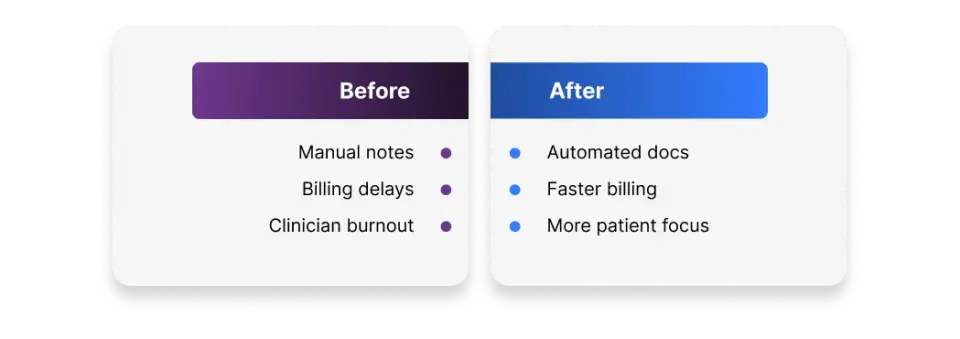
Generative AI provides healthcare leaders with a tangible path to enhance efficiency, improve patient care, and accelerate innovation. By following our seven-step roadmap, measuring clear KPIs, and benchmarking real-world ROI, you can confidently move from concept to clinical transformation – while minimizing risk and maximizing returns.
Next Steps:
- Discover how our Healthcare App Development Company services can support your Generative AI journey – from pilot design to full-scale deployment.
- Do you have questions, or would you like to learn more? Contact our team today – we’re here to guide your exploration.
FAQs
- What is generative AI in healthcare?
Generative AI in healthcare refers to advanced models (like large language models and multimodal networks) that create new content – such as clinical notes, treatment plans, or diagnostic interpretations – rather than just making predictions. It supports everyday workflows by generating reliable, structured outputs from unstructured data.
- How is generative AI different from traditional AI?
Unlike traditional AI, which forecasts outcomes (e.g., the risk of sepsis), generative AI produces detailed, actionable content—such as drafting reports or simulating clinical scenarios—adding value through content creation and automation.
- What are the primary applications of generative AI in healthcare?
Top use cases include:
- Automated clinical documentation
- AI-enhanced diagnostics and imaging
- Drug discovery using molecular simulations
- Patient engagement via chatbots and triage tools
- Administrative automation in billing and claims
- These areas show the most impact and early ROI.
- What benefits can healthcare leaders expect?
Generative AI can:
- Save clinician time (e.g., 80% reduction in documentation)
- Improve diagnostic accuracy (up to 94%)
- Cut administrative costs (e.g., 30%+ ROI in billing automation)
- Accelerate innovation, especially in R&D and care delivery
- What compliance and safety measures are required?
Implementing generative AI in healthcare requires robust data privacy measures (HIPAA, GDPR), ethical guardrails (human-in-the-loop, alignment methods, and red-teaming), and infrastructure readiness to prevent issues such as hallucinations, bias, or security breaches.
Author Bio


 Facebook
Facebook Whatsapp
Whatsapp LinkedIn
LinkedIn Pinterest
Pinterest


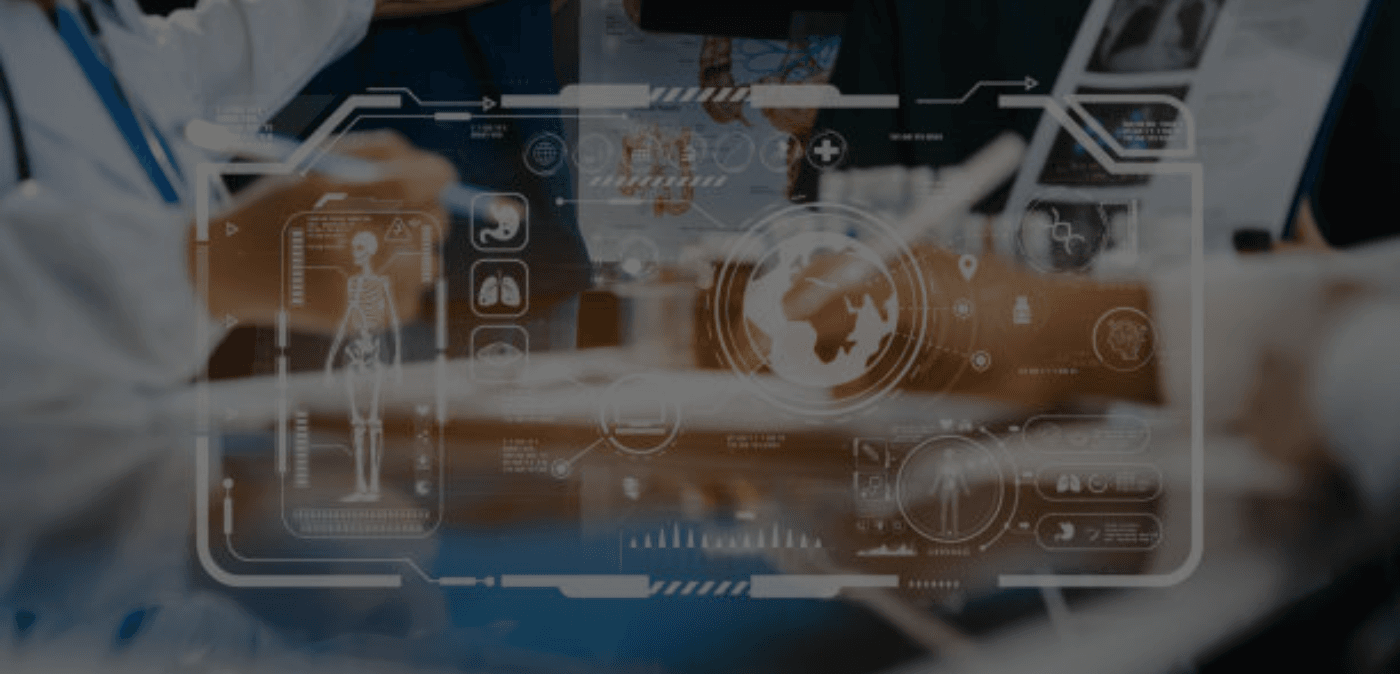

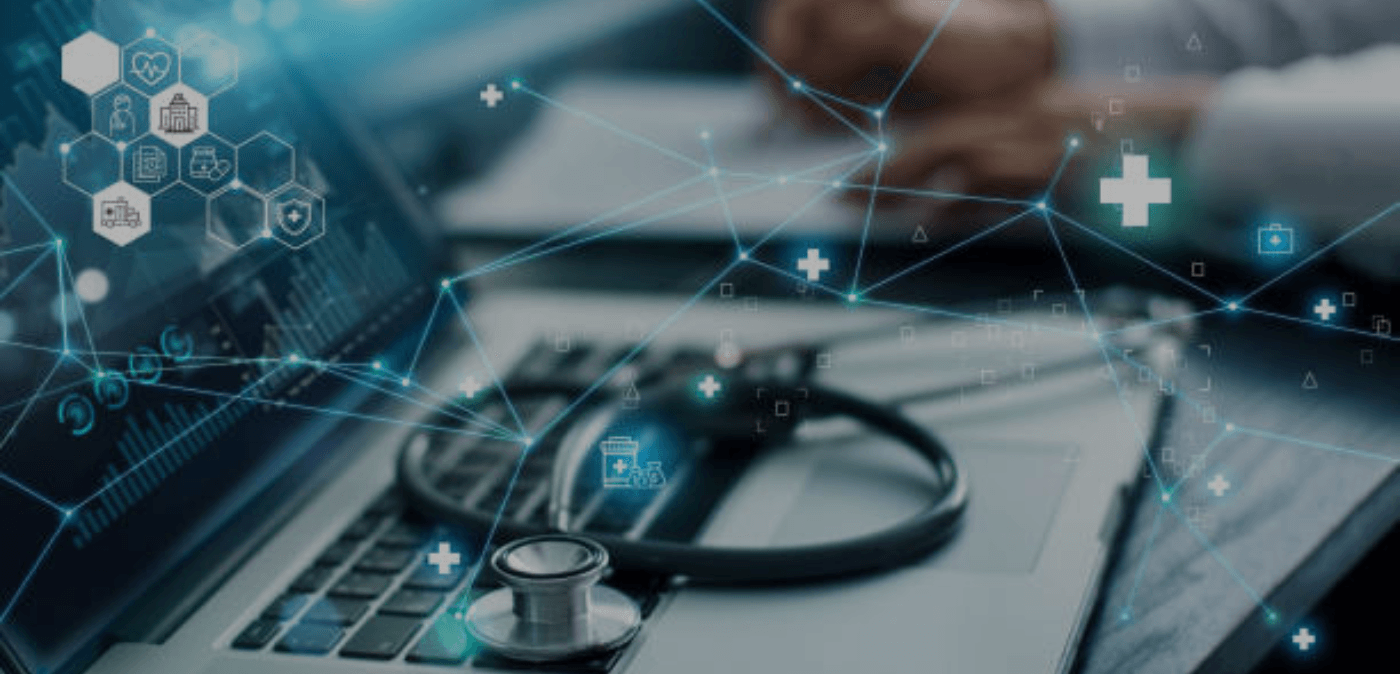
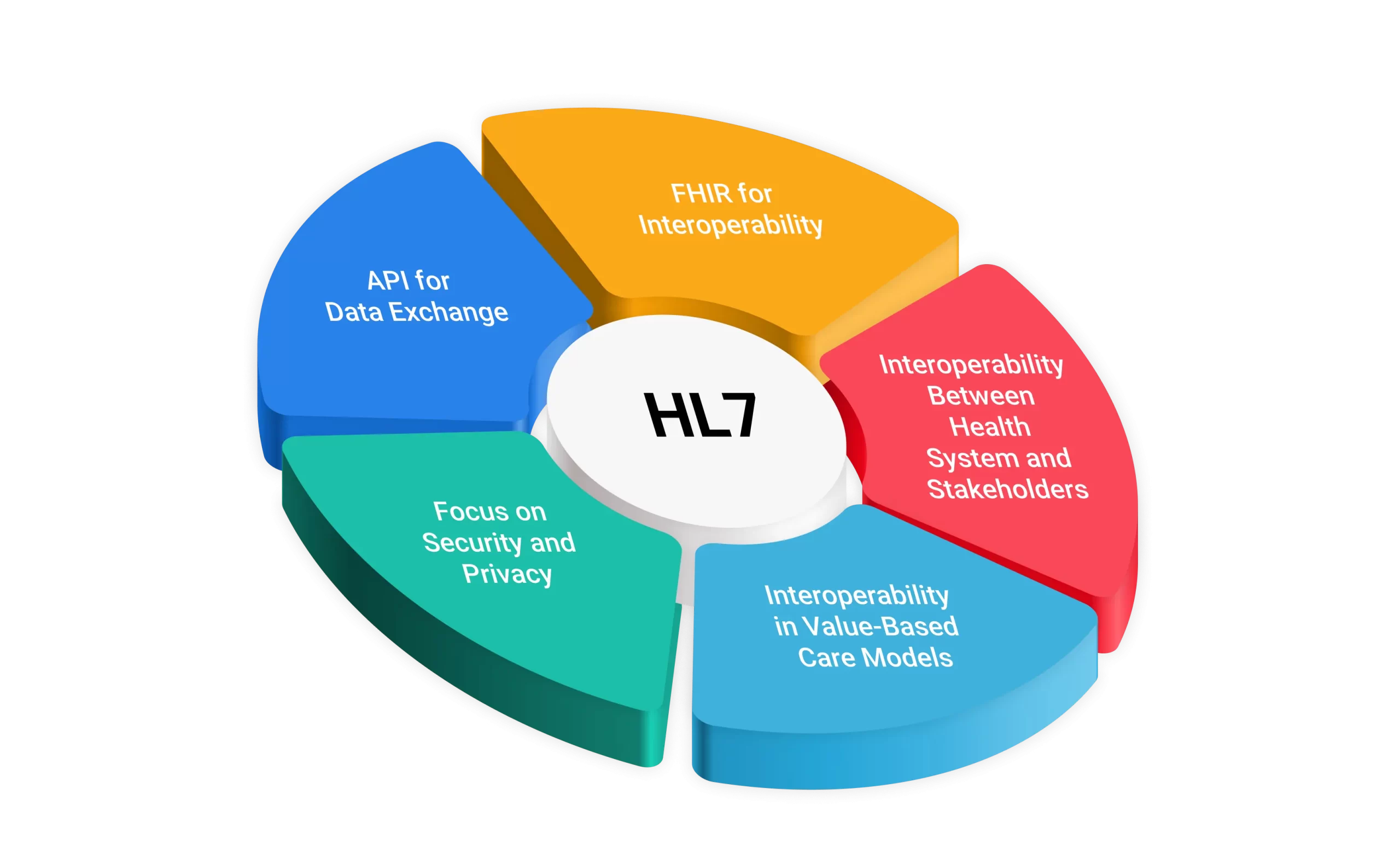
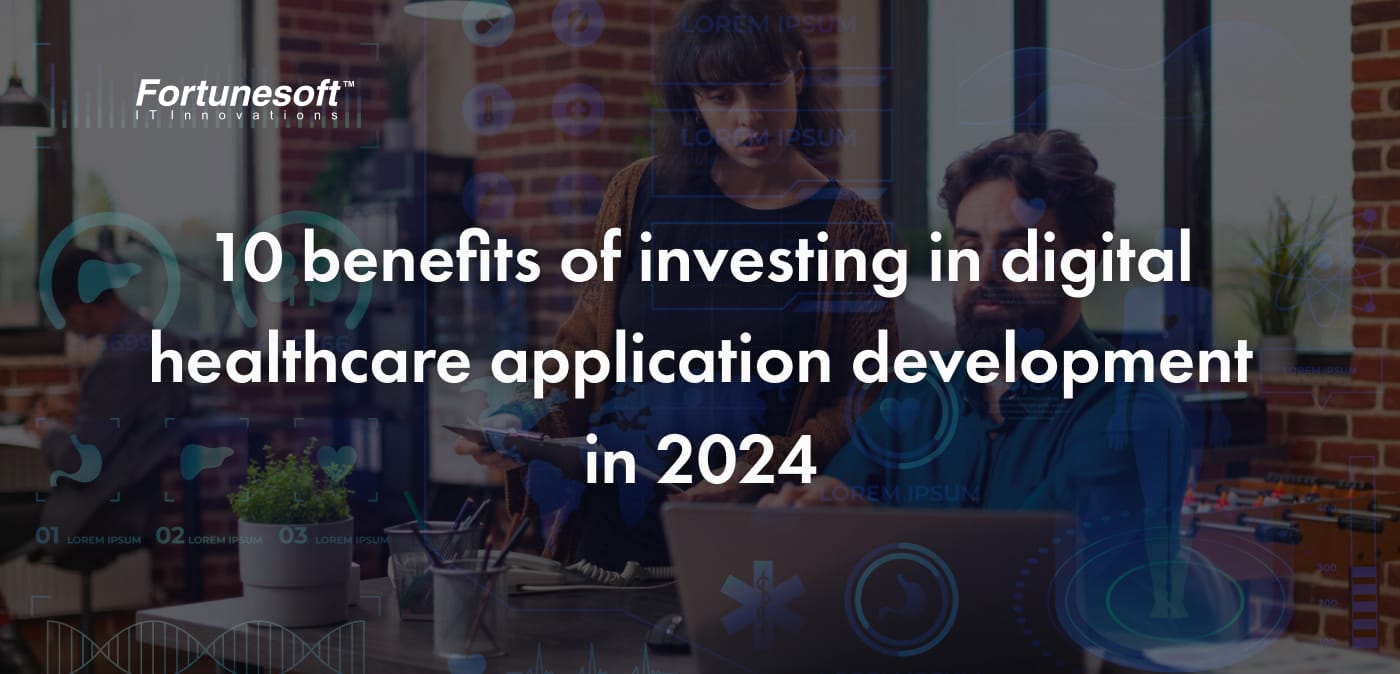
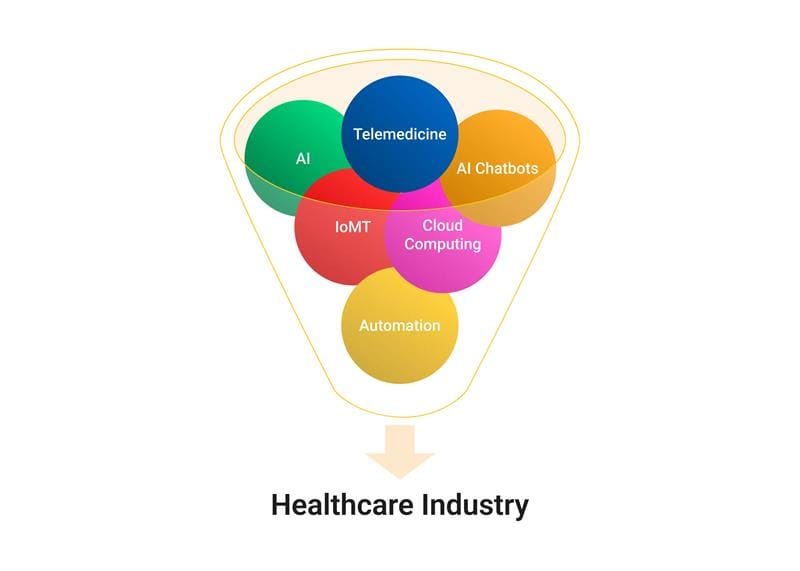

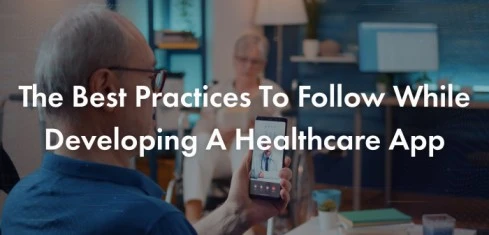

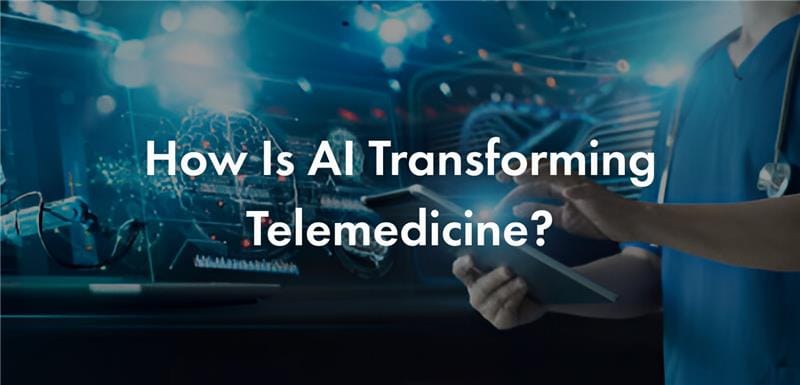


 Start Chat
Start Chat